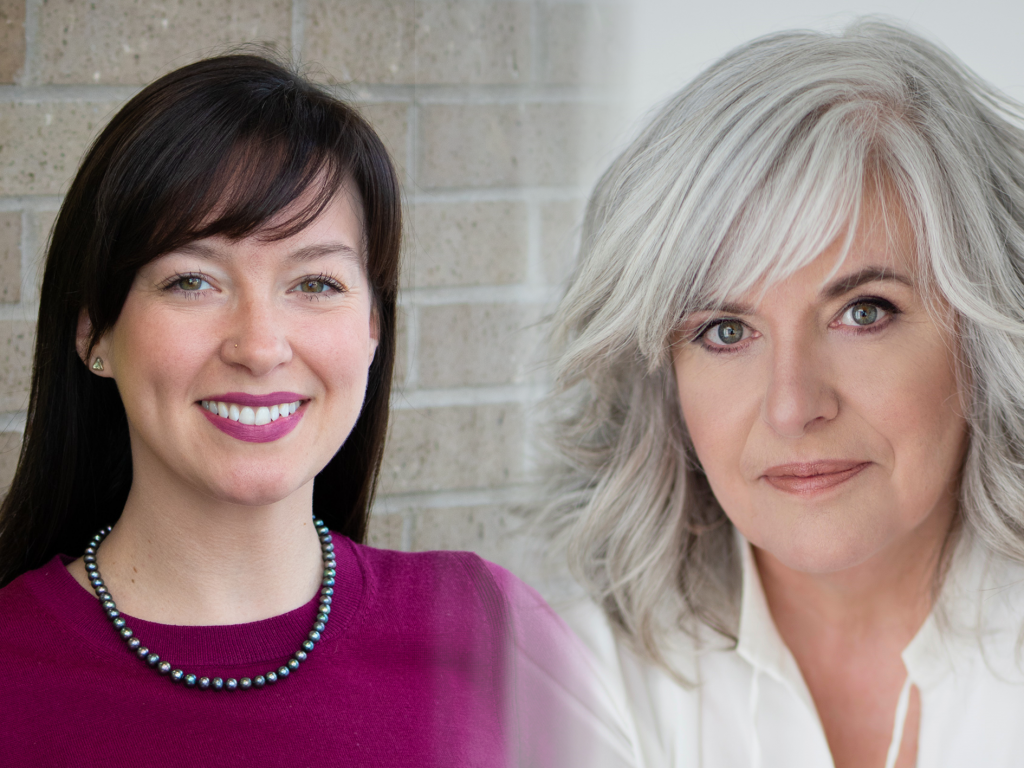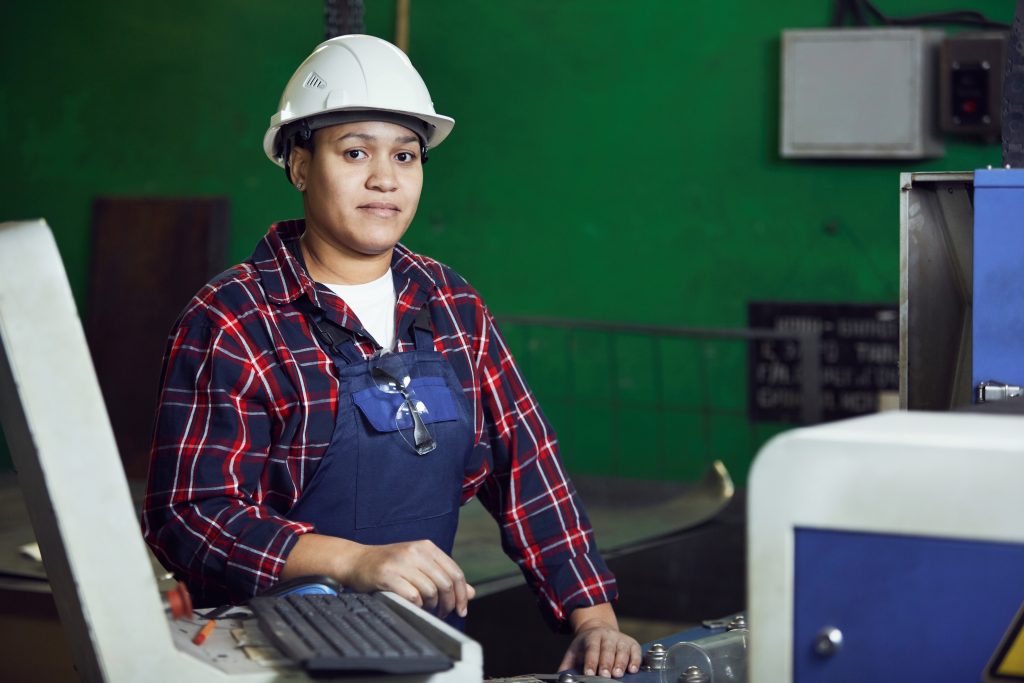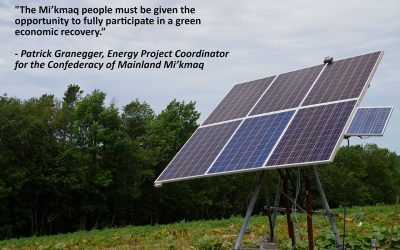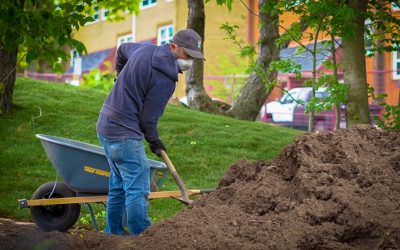
Sandra McKenzie spent more than 30 years working for the province of Nova Scotia, culminating as deputy minister of Education and Early Childhood Development until her retirement in 2017. She now leads an innovation think-tank, The Forge Institute, with her sister in Halifax. Lauren Murphy is a director at Clean Foundation and leads our workforce development department, which includes two award-winning youth internship programs that span the country. Lauren grew up in St. John’s, and now lives in Dartmouth.
Clean’s President & CEO, Scott Skinner, sat down (virtually) with Sandra and Lauren to discuss their roots, what we can learn from previous economic crises, and how we might collectively steer our current economic recovery process towards a clean transition.
SS: How did the collapse of the cod fishery impact you personally, and how did this experience help shape your future career?
LM: I grew up in St. John’s and was the formative age of 12 when the government made the necessary decision to halt an industry that had given purpose to my province for centuries. For generations Newfoundland fishers were experts in their field, lauded globally as industry leaders. When the fishery closed in the summer of 1992, no one knew what the next step could be, and unemployment swept the province. Although I was young, this experience touched me viscerally and helped form my future career choices. My role as Director of Workforce Development for Clean is a fulfilling place for me right now – helping those who have been affected by traditional industry changes find mid-career transitions into the environmental sector.
SM: The collapse of the cod fishery was a devastating time for communities all over Atlantic Canada. I was a young public servant and had been given responsibility to coordinate community-based, adult literacy programming as part of The Atlantic Groundfish Strategy (TAGS) in Nova Scotia. I observed that the loss of employment in the fishery had somehow re-cast the workforce from hard-working leaders and contributors in their communities into individuals with challenges re-attaching to the workforce based on their skillset. It was a deficit model and exactly the wrong way to move ahead. We quickly evolved our approach into a community-development model which focused on advancing people’s goals and aspirations, supported by learning programs. The response was immediate and positive. It was a lesson I carried throughout my career. Start with where people are, find out where they want to go, and offer the opportunities and supports to get there.
SS: Why can’t a sun-setting industry simply provide the workforce necessary for an emerging industry? It seems like an easy way to maintain employment numbers while transitioning to a cleaner economy.
LM: It does feel like an easy answer! The issue is educating people on what the clean economy is, where the employment gaps are, and helping them see that this is in fact a safe and viable career option. Many people who are impacted by traditional industries sunsetting have been in these jobs their entire lives and its scary to consider change. But the truth, albeit tough to see, is that many would already have skills necessary to be useful in many areas of the environmental sector. We also need to educate people on the many government programs which work to support transition workers who want to reskill or retrain to get them to the right place to take on a new role.
SM: Every job requires a set of skills and attributes to be successful. The skillsets in industries going through transition may translate perfectly to a new work model, but often the match is imperfect. Often the gaps between skillsets can be closed by upgrading and training. Some people welcome change as part of their life journey, others find change difficult. Employers need to be aware that both challenges exist and they must respond with upgrading and training opportunities and change management support. It is also true that sectors going through transition will require brand new skillsets for emerging occupations which can be addressed by forging partnerships with training institutions and finding new ways of recruiting and positioning employment opportunities in the clean economy.

SS: Our own Clean Leadership program helps youth find meaningful work in environmental sectors, but how can we extend this offering to mid-career folks?
LM: It’s amazing that Cleans’ current programs support students and graduates find meaningful work in the environmental industry. This is a generation of people who have a strong passion for the environment and are bright and eager to put in the work needed to help our planet. But there is also opportunity for those who find themselves either working for an industry that is unsustainable or who are eager to take advantage of a new and growing market. By working with local employers and governments we could easily develop a program that assists impacted workers – it is something we’ve been thinking about for some time. Clean could provide businesses and non‐profit organizations looking to expand their workforce with potential job placement candidates, while at the same time provide real-life hands-on work experience for those dealing with a midcareer transition – sounds like a win/win situation.
SS: What role do educators, parents, or family support structures play in eliminating barriers to a workforce transition?
SM: In 2017, a survey of children in Grades 6-9, found that just 13% expressed an interest in pursuing a career in the marine sector. It was a shocking result for a province surrounded by the ocean. These findings pointed to the need for schools to have better information on career opportunities in Nova Scotia’s natural resource sectors. More importantly, the report highlighted the significant role that parents play in influencing career choices. If parents have a very narrow and negative view of a sector, they tend to actively steer their child away from the sector as well. Improving the quality of career information in schools is important and underway, but it is important to also remember that parents are hugely significant influencers in the career choices of their children. Innovative ways to grow knowledge and awareness of jobs in the clean tech sector needs to target youth and the support networks around them.
SS: In a recent survey of Nova Scotians, more than 84% believed that our government should consider climate change when developing an economic recovery strategy post Covid-19. What actions do you think are necessary in the short-term to increase employment opportunities in the clean economy?
LM: If we want to promote the clean economy as a driver of jobs and opportunities, as well as help address the issue of climate change, governments need to drive activity through clear, consistent and sustainable funding. When looking ahead at a potential economic recovery strategy, ideally there would be collaboration with non-profits and businesses and alignment between federal and provincial programs to really build inclusive job growth in the environmental sector. Clean understands that there are already many efforts underway on this so we are looking forward to learning more so we can plan on supporting new opportunities wherever we can.
SM: The journey through the COVID-19 pandemic is not over, but already we have learned that individuals, businesses, non-profits, and governments have the capacity to rapidly pivot, adapt and re-set. These skills will serve us well as we undertake an economic recovery which includes addressing climate change as a defining value. Over the longer term, the economic recovery plan can include investment in the clean tech sector, education and training in emerging occupations, and regulatory and infrastructure expenditures to support a clean economy. The challenge for these long-term goals is identifying the optimal places to invest. Short-term expenditures on clean economy pilot projects, such as education and training, and small-scale experimentation in new processes and regulations, can help guide longer term decision-making while providing immediate injections into the growth and development of a workforce.
SS: How is your current work with the forestry sector in Nova Scotia similar to your earlier, formative experiences with cod in Atlantic Canada?
SM: As I learned from my TAGS experience, it is important to start where people are, find out where they want to go, and offer the opportunities and supports necessary to get there. The forestry sector and Nova Scotians are ready to transition to a higher-value forestry model with a lower environmental impact. A report presented by Prof. Bill Lahey provides a guide to advance ecological forestry practices. The province has a transition team looking at the sector and our innovation trust will support new opportunities. We are starting where we are and moving forward together.
SS: The “Atlantic Bubble” concept has reinforced the idea that we should consider more domestic employment, innovation, and business in the region. Do you believe there is enough workforce potential for positive, clean economic growth in Atlantic Canada?
LM: In my current role I have the privilege to speak to many employers throughout Atlantic Canada whose organizations work in the clean sector. The one thing I consistently hear is they desperately require a pipeline of properly trained talent to keep up with demand and to allow for future growth. I think it is also critical to mention that there is a lot of potential around inclusivity and creating opportunities for historically disadvantaged communities within this sector. The current labour market is tight, so to achieve this desired inclusive and equitable growth a targeted effort is going to be required.



